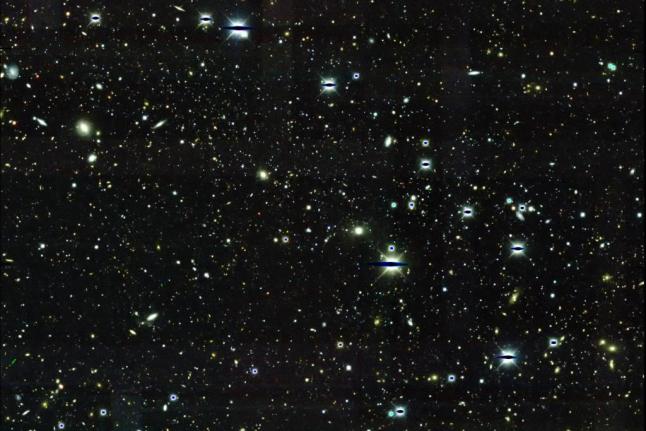Nine New Dwarf Satellites Found Orbiting The Milky Way

BATAVIA, Ill., March 11 (UPI) — In analyzing data collected as part of the Dark Energy Survey, two groups of researchers in the U.S. and England have independently discovered nine new dwarf satellites. At least three of the tiny star clusters are dwarf galaxies.
The discovery was announced jointly by a team of researchers working with the Dark Energy Survey, a project headquartered at the U.S. Department of Energy’s Fermi National Accelerator Laboratory, as well as a team of astronomers from the University of Cambridge.
The Dark Energy Survey is an effort to better understand the universe’s accelerating expansion by photographing deep space objects in the sky of the southern hemisphere. Image data is captured by the Dark Energy Camera — part of the Victor M. Blanco telescope in Chile — and made available to the public for research purposes.
“The discovery of so many satellites in such a small area of the sky was completely unexpected,” said Sergey Koposov, lead author of one of the two new surveys and an astronomer at Cambridge’s Institute of Astronomy. “I could not believe my eyes.”
The nine satellite clusters have surely been orbiting the Milky Way for some time, but they are so small and dim that they proved extremely elusive, escaping Earth’s probing observatory cameras — and the astronomers who sort through the telescopic data — until now. The dwarf satellites are roughly a billion times dimmer than the Milky Way, and a million times smaller. The closest of the nine clusters is about 100,000 light-years away, while the farthest is 1.2 million light-years away.
The reason they’re so small and faint is that dwarf galaxies are believed to be made up of just 1 percent observable matter — the rest is dark matter. This makes them ideal for testing out theories about dark matter and their role in the expansion of the cosmos.
“The large dark matter content of Milky Way satellite galaxies makes this a significant result for both astronomy and physics,” said Alex Drlica-Wagner, an astronomer at Fermilab and a leading researcher on the Dark Energy Survey team.
“Dwarf satellites are the final frontier for testing our theories of dark matter,” Vasily Belokurov, a researcher at the Institute of Astronomy, explained. “We need to find them to determine whether our cosmological picture makes sense.”
The surveys have both been published online in The Astrophysical Journal.






